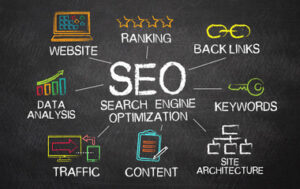A wooden fence is a popular choice for homeowners because it offers a variety of benefits. Whether you choose a simple picket fence or a lattice topper, there are several ways to customize your wood fence’s look.
A kickboard can help protect against ground-level moisture exposure, preventing the lower portion of your wooden fence from rotting and inviting pests. It can also add a polished finish to your fence.

Wood fences are a great choice for privacy. They can be constructed from a variety of materials, but wood is generally the best option for a privacy fence. It is relatively inexpensive and can be stained or painted for a variety of different looks. Additionally, it can be treated to withstand weather and other outdoor elements. Wood fences are also attractive and can help to add value to your home.
One of the most popular types of wooden fences is a traditional vertical privacy fence. These fences feature tightly-spaced vertical pickets and no gaps between them, ensuring that you can enjoy your private yard without being seen by neighbors or passersby. The top of the fence can be flat for a simple look or styled into a decorative design to enhance your property’s curb appeal.
Another way to increase your privacy is by adding landscaping to your backyard. Planting trees and shrubs can create a natural barrier that will keep you and your neighbors from seeing each other’s homes. Using trellises with climbing plants can further boost your privacy and create a beautiful garden. You can also use lattice privacy screens to add an aesthetic element to your privacy fence.
If you are looking for an even more private option, consider a board-on-board fence. This fence type is air-tight, meaning that light cannot pass through it. It is perfect for front yards and can provide a great first impression to your neighbors.
Other options for privacy fencing include a shadow box fence, a panel-on-panel fence, and a picture frame fence. Each of these fences uses a slightly different technique to conceal the bottom of the fence from view. While these fences offer great privacy, they can be costly and require a lot of maintenance.
Security
Wooden fences can be built to a variety of heights, which can help keep children and pets safe by creating an effective barrier that is difficult to climb over. They can also be constructed to include gates and doorways, making them more attractive than many other types of fencing and helping deter criminals. If you choose to install a wooden fence, it is important to ensure that it is treated against weather, rot, bugs and termites. This will add to the cost of the fence, but it will be well worth the investment if it helps keep your family and possessions safe.
A good way to add security to your wooden fence is to cover it with anti-climb paint. This paint never dries and is slippery, which makes it impossible to climb over the slats of your fence. Commercial buildings and government facilities often use this type of paint on their fences, and it can be a great way to prevent crime. When using this technique, however, it is important to make sure that the paint is only applied to the top of the slats. If you decide to use this method, it is also a good idea to post a sign that warns people about the dangers of climbing over your fence.
Another effective security measure for your wooden fence is to grow thorny plants around it. This will deter criminals because it is difficult to walk through a thorny bush or climb over a thorny trellis without getting hurt. In addition, a thorny plant will deter small animals and insects from entering your property.
After your wooden fence is installed, it is a good idea to let it rest and dry for several weeks before staining and sealing it. The wood that is used in a new fence will have been treated with chemicals and a mill glaze to protect it from damage during transportation and installation, and these materials can block the stain and sealant from fully penetrating the wood. This can lead to faster deterioration of your wooden fence, so it is crucial that you allow the wood time to completely dry before applying these products.
Durability
Wood fences are incredibly durable when they’re properly cared for and installed. They can last for decades or longer compared to other fencing materials such as vinyl and aluminum. However, the lifespan of a wooden fence depends on a number of factors. These include the species of wood, weather conditions, maintenance practices, and installation quality. Regular staining and painting can also help prolong the life of a wooden fence.
The type of wood used in a wooden fence is crucial to its durability. Contractors generally prefer to use cedar, spruce, and redwood because they’re long-lasting and more resistant to the elements. Fences made with these types of wood are often more expensive than those made from pine, but they’re more visually appealing and will last much longer.
In order to make a wood fence more durable, contractors should always use pressure-treated lumber. This is because the posts, which touch the ground, need to be treated to resist water damage and insect infestation. However, the pickets and rails of a wooden fence don’t require treatment because they’re not directly exposed to the elements.
To protect a wooden fence from moisture and insect damage, it’s important to regularly clean and inspect it. This will help keep moss, mildew, and mold growth to a minimum. It’s also a good idea to apply a water-repellent stain or sealant every few years. This will limit the amount of moisture and UV rays that reach the wood, which can cause it to rot or fade over time.
Another way to make a wooden fence more durable is to add a lattice top, which is a decorative wood structure that’s placed over the pickets and boards of the fence. The lattice topper can be crafted from the same material as the fence or a different one for visual contrast. It can be a great way to add some extra privacy to a property without blocking any views.
Adding a concrete spur to each post can make it more sturdy, and sandbags can help prevent soil erosion that can damage the base of the fence. Lastly, fence owners should inspect the condition of their wooden fence on a regular basis and replace any rotting or damaged boards as soon as possible. This will ensure the longevity of the wood and protect the safety and security of your home or business.
Aesthetics
Wood fences can add a touch of elegance to any home. They can be customized with paint and stain to create a design that complements your landscape, architectural style, and property line. Wooden fences can also be augmented with decorative accents like metal panels, geometric patterns, or artistic designs to elevate their aesthetic and turn them into more of a statement piece that defines your outdoor living space.
Cedar is one of the most popular choices for wood fences because of its premium aesthetic. It is also one of the most durable and long-lasting options, ensuring that your fence will last for years to come. Cedar is a hard, strong, and dense type of wood that provides a beautiful and distinctive look. Its coloration varies from a pale green to a silvery gray and can be enhanced by natural oils.
Another common choice for wood fences is pine. It is often used to construct classic stockade, dog-ear, and shadow-box styles because of its durability and affordability. This soft, strong wood is less likely to shrink than other types of wood and offers a range of visual textures that can be improved with staining and painting.
Other options for a wooden fence include cypress and oakwood. Cypress is a relatively lightweight softwood that has a lighter color and grain pattern than most hardwoods. It is more resilient than most other softwoods, making it a good choice for use in harsh weather conditions. It is also resistant to insects and fungi, which makes it a great choice for use in wood fences that will be exposed to the elements.
Oakwood is a very attractive wood that has a noticeable wavy texture that accentuates its natural beauty. Its light color features a hint of golden amber when finished. When properly maintained, this type of wooden fence can last for centuries.
When installing a wooden fence, it is important to keep in mind that the finished side of the wood will be visible to neighbors and passersby. As such, it is a good idea to consider your neighbors’ aesthetic preferences before you decide on a fencing material and layout. It is also a good idea to check with your neighbors before beginning construction to ensure that you are not violating any property lines or creating any concerns.








